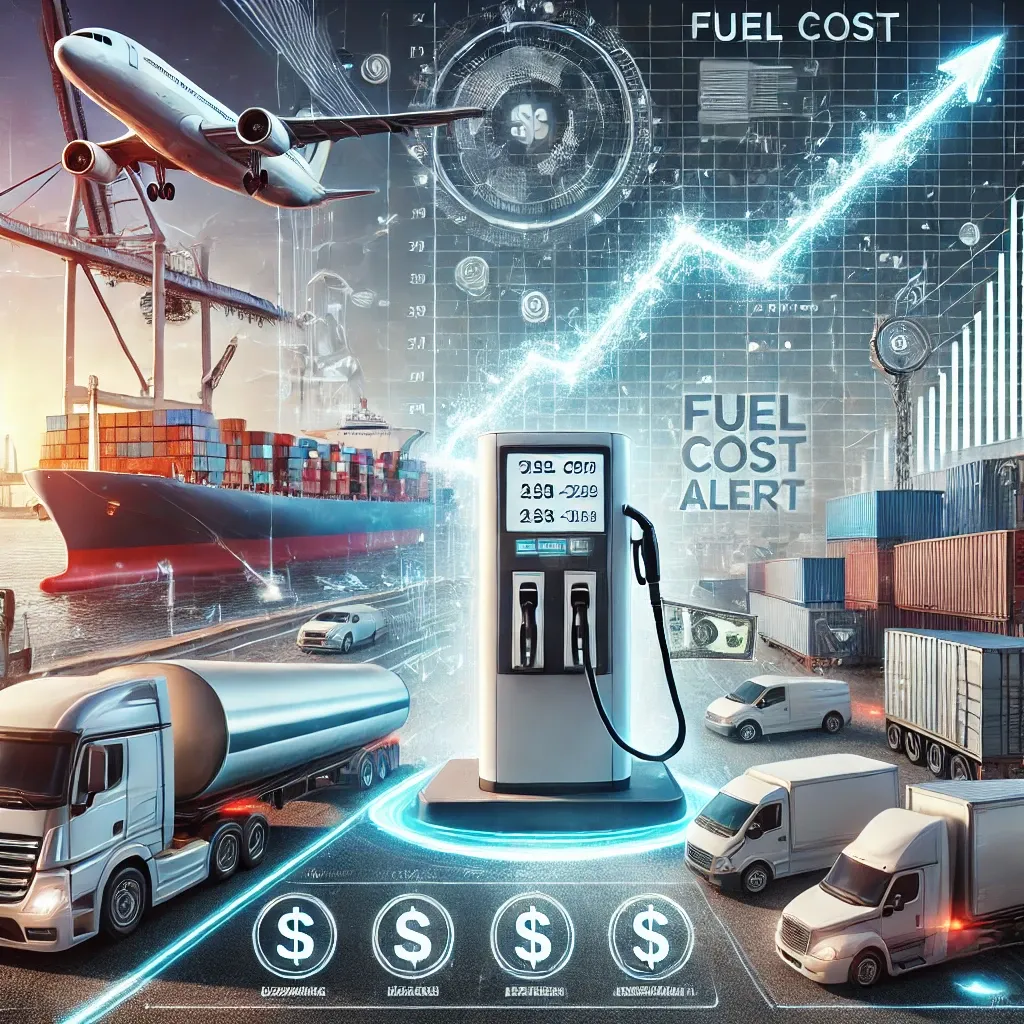
Fuel prices play a pivotal role in shaping the transportation and logistics industry. As a primary cost driver, fluctuations in fuel markets affect every aspect of logistics, from the shipping of goods across continents to the last-mile delivery that gets products to consumers’ doorsteps. In an era of volatile fuel prices, businesses are compelled to adapt their operations, re-evaluate pricing strategies, and explore sustainable alternatives to maintain profitability and efficiency.
The Impact of Rising Fuel Costs
- Increased Transportation Costs
- Fuel accounts for a significant portion of transportation expenses. When fuel prices spike, operating costs for trucking companies, shipping lines, and air freight providers rise proportionally.
- Last-mile delivery, already cost-intensive due to its reliance on smaller vehicles and individualized routes, becomes even more expensive, affecting e-commerce and consumer goods sectors.
- Higher Consumer Prices
- Rising transportation costs are often passed down the supply chain, leading to increased prices for end consumers. This can strain household budgets and reduce discretionary spending, impacting overall demand.
- Supply Chain Disruptions
- Unstable fuel prices can lead to delays in transportation as companies adjust their routes and methods to cut costs. This affects inventory levels and disrupts just-in-time supply chain models.
- Profitability Pressures
- For small and medium-sized logistics companies operating on thin margins, volatile fuel costs can be a significant challenge. Many struggle to absorb these increases without losing competitiveness.
Strategies to Mitigate Fuel Price Volatility
- Optimizing Fleet Efficiency
- Companies are investing in more fuel-efficient vehicles to reduce overall consumption. Innovations like lightweight materials and aerodynamic designs are increasingly becoming standard in fleet upgrades.
- Driver training programs that emphasize fuel-efficient driving techniques, such as maintaining steady speeds and minimizing idling, also contribute to cost savings.
- Exploring Alternative Energy Sources
- Electric and hybrid vehicles offer a viable alternative to traditional diesel-powered fleets. Although the upfront investment is higher, these vehicles have lower operating costs and are less impacted by fuel market fluctuations.
- The adoption of biofuels and hydrogen fuel cells is also gaining traction, particularly in long-haul and heavy-duty transportation.
- Implementing Route Optimization
- Advanced software solutions and GPS technology enable companies to design the most fuel-efficient routes, reducing mileage and fuel consumption.
- Dynamic routing systems that adapt to real-time traffic conditions further enhance efficiency.
- Fuel Hedging
- Larger companies often engage in fuel hedging to lock in prices and protect against market volatility. This financial strategy provides stability and predictability in budgeting.
- Shifting Transportation Modes
- Businesses are increasingly turning to intermodal transportation, combining rail, truck, and sea shipping, to reduce reliance on fuel-intensive methods. Rail, for example, is significantly more fuel-efficient than road transport for long-distance shipments.
- Adopting Green Logistics Practices
- In addition to exploring alternative fuels, companies are focusing on sustainability initiatives like load optimization to maximize the efficiency of each trip.
- Consolidating shipments and collaborating with other companies to share transportation resources can also help lower fuel dependency.
Long-Term Trends and the Role of Technology
The push toward greener transportation systems is transforming the logistics landscape. Governments and industry stakeholders are investing in electric charging infrastructure and incentivizing the adoption of clean energy vehicles. Autonomous vehicles, while still in development, promise further efficiency gains by minimizing human error and optimizing fuel use.
In the short term, advancements in data analytics and predictive modeling allow companies to better forecast fuel costs and adapt their operations accordingly. These tools provide valuable insights for fleet management and help businesses remain agile in a volatile market.
Conclusion
Rising fuel costs present a significant challenge for the transportation and logistics industry, but they also serve as a catalyst for innovation. By investing in fuel-efficient technologies, adopting sustainable practices, and leveraging data-driven tools, companies can reduce their dependency on fossil fuels and mitigate the impact of fuel price volatility. As the industry moves toward a more sustainable and resilient future, addressing these challenges will not only improve profitability but also contribute to global environmental goals.
Jenny is a business insurance broker with Waypoint Insurance. She can be reached at 604-317-6755 or jhansen@waypoint.ca
Jenny Holly Hansen is a cohost with Chris Sturges of the Langley Impact Networking Group. You are welcome to join us on Thursday’s from 4pm to 6pm at: Sidebar Bar and Grill: 100b - 20018 83A Avenue, Langley, BC V2Y 3R4
Jenny Holly Hansen is a cohost with Chris Sturges of the WRN News - Langley Edition
Tags: #Langley Impact Networking #Industry Insights #Transporation and Logistics #Supply Chain Disruption #Rising fuel Costs #Jenny Holly Hansen

